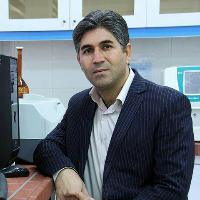Identification of Ecotypes and Different Species of Savory (Satureja spp.) Using DNA Barcoding Genes
Medicinal plants are valuable resources that have been considered by developing and developed countries considered as raw materials to become safe drugs for humans. Satureja belonging to the Lamiaceae This genus has more than 91 species with a wide distribution in the Mediterranean region. There are more than 8 species of this genus in Iran. Genetic identification and registration of different plant cultivars is one of the important stages of protecting genetic resources, which will be a difficult task for most plants in the early stages due to morphological characteristics. DNA barcoding is an emerging technology for fast and accurate species identification, and it is a molecular-based identification system that has recently been widely used, and its purpose is to identify biological samples and assign them to a specific species. Molecular DNA barcoding method is a reliable tool for identifying medicinal plants at the genus and species level. In this technique, a small part of the plant genome is sequenced and used to identify and determine the relationship between different species of a genus.
In the present study, the seeds of different species of savory plants including ( horentiss, S. bakhtiari, S. biossier, S. mutica, S. bakhtiari) were prepared from different regions of Ilam province and the National Center of Genetic and Biological Resources of Iran were investigated using DNA barcoding. Seed cultivation was done in April 2016 in the greenhouse of Ilam University. The seeds of the used species were grown in small pots. After the seeds germinated, when the seedlings grew to the stage of two to three leaves, the young leaves were sampled for DNA extraction. Genomic DNA was extracted by Doyle et al.'s method in the biotechnology laboratory of Ilam University in 1397. Quality and quantity of genomic DNA was checked using agarose gel 1/2% and nanodrop device respectively. PCR was performed using specific primers for matK, rbcL and ITS genes. Among the studied genes only matK gene was amplified in all samples. After purification of PCR products, their product were sequenced. In order analysis of data, first, the sequence Blast in NCBI database using nucleotide Blast. Alignment of sequence was done using Clustalw method by BioEdite Sequence Alignment Editor Software. Indeed, Phylogenetic tree created using MEGA-X software.
PCR amplification show that the only matK gene well amplified in all samples, while the other genes were not amplified. Also, the quality of the graphs shows the high quality of the sequence of the amplified fragment of the PCR product and the purity of the examined samples. Nucleotide BLAST in NCBI show that our results have high similarity with related spices in NCBI (more than 96%). The results of the analysis of content of nucleotides in the studied samples in comparison with the sample in NCBI show that according to the changes observed in the length of the fragment amplified on the agarose gel, but there were no significant changes in the molecular percentage of nucleotides in the studied samples. Cluster analysis based on UPGMA method of matK gene showed that the samples of biossier and S. bakhtiarica of Ilam and Gilan along with the sample of S. hortensis Birjand and Yazd were in the same group and samples of s. bakhtiari Yazd and s. Khorasan mutica were in the second group.
The results of PCR amplification show that matK gene has been amplified in all samples that it can be very well way for investigating and determining of phylogenetic relationship of different savory species. The results of matK gene sequence as one of the candidate genes in plant DNA barcodes showed that the studied samples and ecotypes along with samples extracted from NCBI were classified into three groups. The results of this study showed that it is possible to use the matK gene as a part of the barcode system to identify savory species. However, due to the lack of information about the barcode library for the matK gene in the Satureja genus, it is not possible to make a definite conclusion about the species. The matK gene has two advantages, including the efficient yield of quality sequences and a high level of species discrimination. In general, re-sequencing of matK gene can be separated different samples from each other based on geographical origin.
- حق عضویت دریافتی صرف حمایت از نشریات عضو و نگهداری، تکمیل و توسعه مگیران میشود.
- پرداخت حق اشتراک و دانلود مقالات اجازه بازنشر آن در سایر رسانههای چاپی و دیجیتال را به کاربر نمیدهد.


